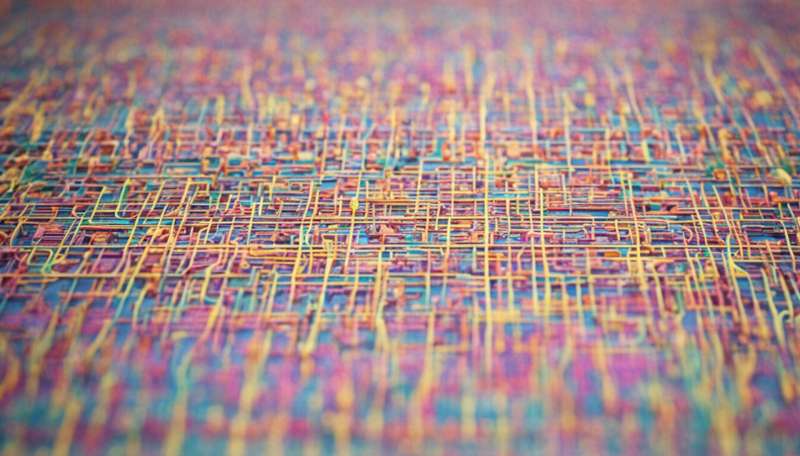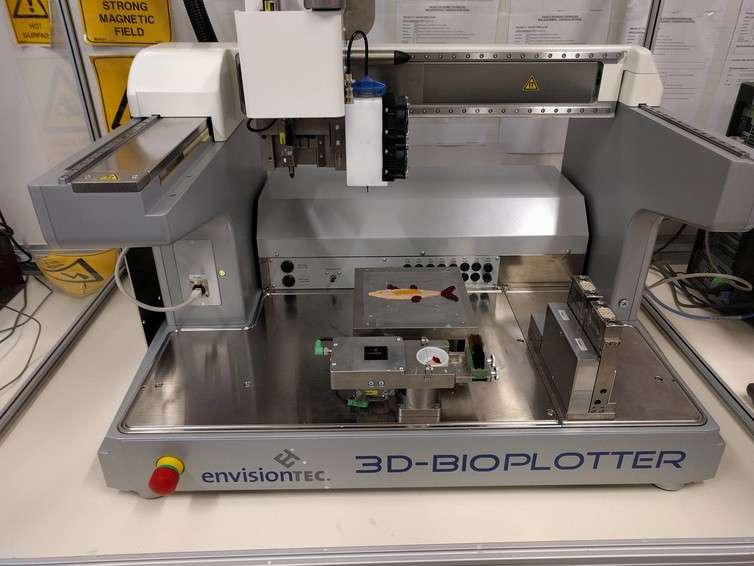How 3-D food printers could improve mealtimes for people with swallowing disorders

It's hard to imagine food prepared in a printer can be tasty and look good. But a presentation at a 3-D food printing shows how printed foods could improve the lives of people with swallowing disorders. These people are only able to eat foods textured in a particular way, which often don't look very nice on the plate.
But while 3-D printing may make foods safer and more appealing to the eye, we still don't have enough evidence to ensure this is the case.
What are swallowing disorders?
Swallowing disorders, or , affect around . This includes people with physical or intellectual disability, cancers of the mouth or throat, neurological conditions such as stroke or Parkinson's disease, and most people living in aged care.
A swallowing disorder can affect nutrition, breathing and quality of life including . Speech pathologists often recommend people with dysphagia eat , which include . They may also advise people to avoid stringy, chewy, crumbly, crunchy and solid foods.
Unfortunately, even well-made texture-modified foods can . This affects the person's enjoyment of their meal, and leads to reduced appetite and eating less food. People with dysphagia also report feeling angry and depressed about a .
This is where 3-D food printing might help. Printed food could improve the visual appeal, as well as the safety, of texture-modified foods.
It could also give people with dysphagia some control by allowing them to be part of the design and creation of the 3-D-printed food. People in residential care could help design foods to be printed for them in-house.
How could 3-D printing help?
Printing food starts with having an idea of a food in a particular shape for printing. The shape is then designed on computer-assisted design software, and translated into a pattern for the printer. The food material is prepared, loaded into the printer, printed, and cooked afterwards if necessary.
At the moment, 3-D food printing is a venture in the stage. But mean more food textures, flavours and colours can be combined as they are printed into edible shapes.
3-D food printing also allows layering of different tastes, textures and colours into the desired shape, without needing food additives.

Researchers have printed a variety of regular foods. Among these are pizza, pasta, hamburgers, chocolate, cookies and even a using beaten egg meringue. have also been printed.
Our team of engineers and speech pathologists recently designed and printed a . It consisted of layers of pureed tuna for protein in the fish body, pureed beetroot for purple vegetable fins, and pureed pumpkin for an orange eye and gills.
If people with dysphagia are given food of the wrong texture, or are not provided with appropriate , they face an increased risk of choking. In some cases this can be be .
3-D food printing could reduce such risks for people with dysphagia. If the printing to , it could improve the quality of texture-modified foods.
Is it as good as it sounds?
Given the hype and of 3-D food printing, there's a startling lack of evidence on the experiences of people with dysphagia eating these foods.
We don't know if these foods would be acceptable or safe for people to swallow. The has warned there are no rigorous examinations of the safety of food made by 3-D printing.
And a recent details an alarming inventory of potential hazards and subsequent risks of 3-D printed foods. These include forming that to health; microbiological risks that could come from a contaminated or dirty printer cartridge; physical risks such as printer fragments breaking off; and food fraud through the marketing of sub-standard raw materials in cartridges.
The authors of the also found no scientific publications or guidelines on the food safety aspects of 3-D food printing. So it's not known how these risks might be reduced or removed in preparing 3-D foods for people with dysphagia.
We need to know more
People with dysphagia and their supporters need to be included in the design of 3-D-printed foods. Modifying food textures by 3-D printing without consulting with them, or considering the food's safety, .
In the absence of convincing evidence, it remains to be seen whether 3-D printing texture-modified foods will help people with dysphagia.
People who have trouble swallowing should seek medical advice and . For those providing mealtime assistance to people with dysphagia, first aid courses are recommended. First aid facts can be found , and advice on responding to choking .
Provided by The Conversation
This article was originally published on . Read the .![]()



















